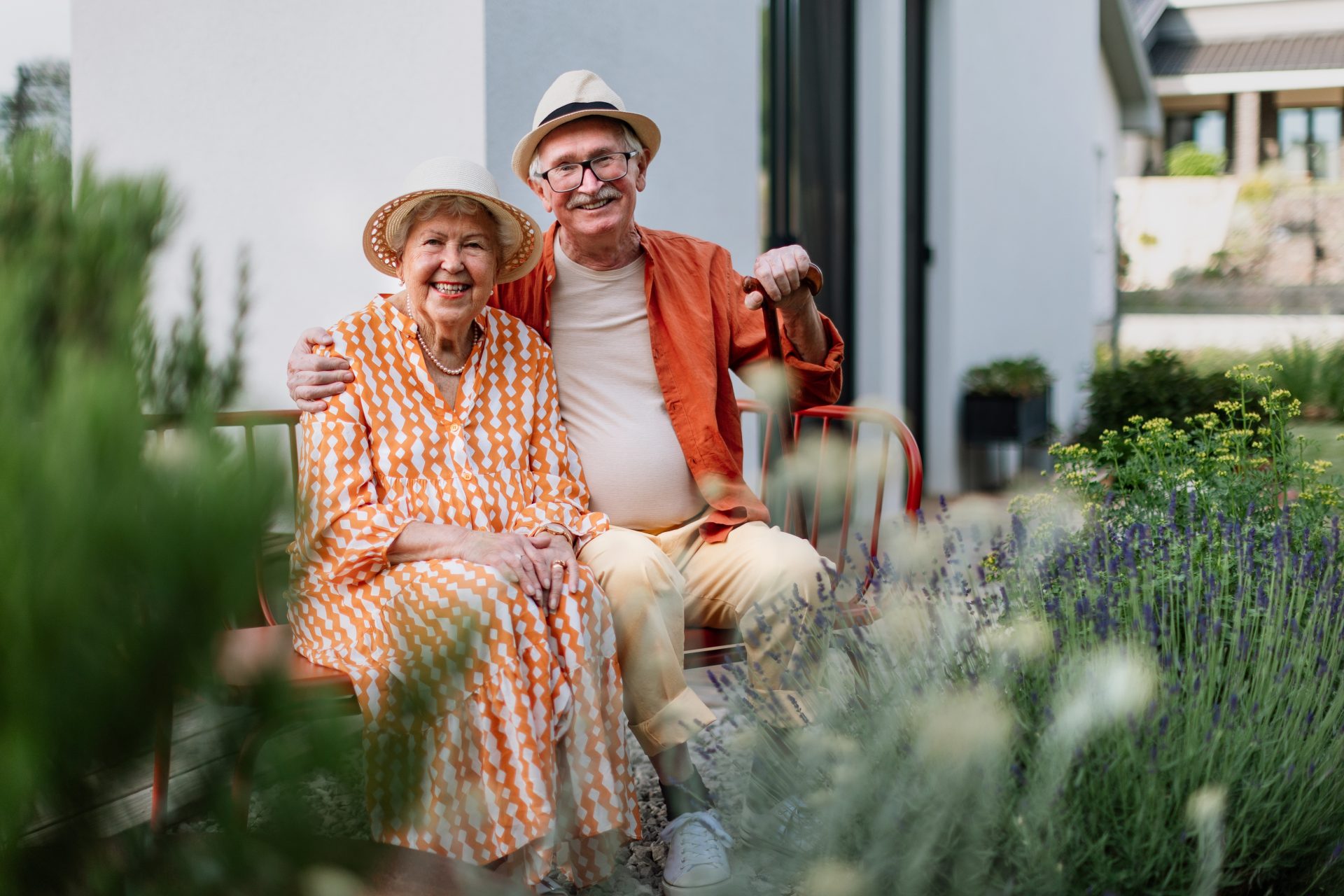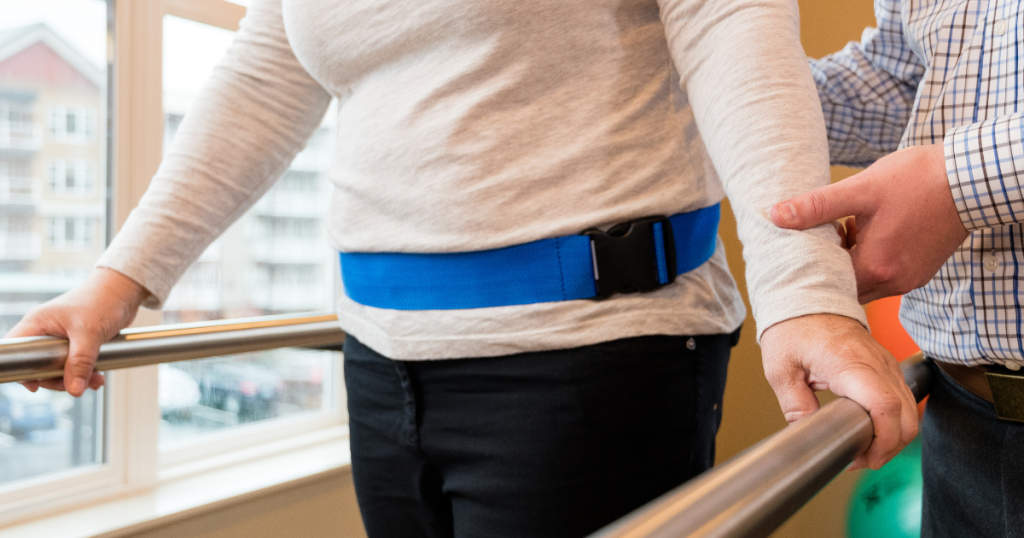It works for rehabilitation and fall prevention, too.
With September being Healthy Aging Month, it’s a fitting time to showcase our holistic wellness program here at Heron’s Key. While many people focus on the physical component of wellness, we believe it’s important to take into consideration all aspects of “what makes us tick” when it comes to being, and staying, well. After all, we’re more than just our bodies, right?
By looking at these various components of well-being as the keys to successful aging, we can take a more active approach. In other words, instead of thinking about aging as something that happens to us, we can be proactive and develop lifestyle habits that will pay dividends in good health.
What Holistic Wellness Is — And Isn’t
Holistic wellness encompasses the many ways in which we interact with our environment: for example, how we connect with the people around us, what kind of emotions we experience as we go through our day, and whether we’re engaged intellectually with what’s going on in our lives and in the world.
Those who practice yoga, meditation, tai chi, and similar disciplines often refer to this as the mind-body-spirit connection. Although our concept of holistic wellness is broader, incorporating additional facets of everyday life into the overall concept, the upshot of either perspective is this: Rather than reacting to illnesses and health issues as they arise, it’s better to live in such a way that we can optimize how we function — physically, mentally and socially — and potentially avert many health problems altogether.
Of course, there’s no guarantee that holistic wellness will transform your life or keep you from getting sick. But it can help you make the most of your health now (whether that means maintaining or improving it) and in the future (whatever that may hold in store).
Safety Is A Key Aspect
Preventive health measures, such as regular checkups and screenings, are important at any age. As we grow older, those measures expand to include a more comprehensive set of measures, including steps we can take to protect our safety.
Fall prevention is a prime example. We all become more prone to falling as we get older. Our eyesight and hearing might not be as good as they once were. Our balance might start to be “a little off.” Our bones and muscles might not be as strong as when we were younger. We might have to take medications that can cause dizziness, drowsiness or other side effects. Our gait may not be as steady, and our coordination may have diminished. We may be dealing with urinary incontinence and find ourselves hurrying to get to the bathroom in time. All of these can increase our risk of falling.
And one of the biggest risk factors of all is having a history of falls. People who have already experienced an injury as the result of falling are more likely to fall again. Why? One of the main reasons is that they restrict their activities in an attempt to keep from falling and injuring themselves yet again. But in many cases, that can have the opposite effect. Being less physically active further erodes their strength and stamina, can open the door to a host of other health conditions, and even lead to social isolation and depression.
Whether you want to avoid falling in the first place or reduce your likelihood of falling again, there are many steps you can take.
For instance, you can make your living environment safer by:
- Evaluating your home for hazards such as loose rugs, clutter (or objects on the floor and in walkways that might get in the way), cords and cables that could be tripped over, and uneven or damaged floors and steps
- Improving the lighting inside and outside of your home
- Using reflective or brightly colored tape to mark the edges of steps and other areas that might be hard to see, especially in low light
- Installing railings, grab bars and non-skid strips to assist with balance and steadiness
- Rearranging shelves, cabinets and closets so that items are easier to reach
- Lowering your bed if it’s too high and rearranging (or replacing) your furniture so you have more space to get up and down and walk around
You can also lower your risk of falling by addressing physical conditions that might present a hazard:
- If it’s been a while since your last eye exam, schedule an appointment.
- Work with a therapist to help find the right exercise program or classes for you, to improve your balance, strength and coordination. Consider using a cane or walker — at least temporarily — if that would help.
- Check with your doctor about starting an exercise routine if you’ve been sedentary. Even if you have limitations, there may be a safe way to increase your level of activity.
- See if different shoes might make you feel steadier on your feet.
- If you are taking medications that make you feel light-headed or foggy, talk with your doctor to see if there are other options, or if maybe a combination of drugs you’re taking could be causing the problem.
- Talk with a counselor if you are fearful of falling. While it’s good to be aware of your risks so that you can take action to address them, feeling anxious about falling or dwelling on what might happen if you do fall isn’t helpful.
- If you’re not getting adequate sleep, talk with your doctor about changes you could make to get the sleep you need.
Holistic Wellness Shapes Rehab at Penrose Harbor, Too
At Heron’s Key, our holistic approach to wellness extends to the rehabilitation services available through Penrose Harbor. Paul Velasquez, Therapy Program Director, and his staff of therapists look at five key elements when they begin working with someone new. Whether that person comes to them from the independent living, assisted living, memory care, or skilled nursing area here at Heron’s Key or from the Gig Harbor community, below are the five elements:
Physical health.
- This not only entails evaluating what the person is capable of doing now but also what they were able to do before an injury or illness. The therapists work with the person to find modifications and a balance between what was and what might be, going forward.
Mental health.
- As Paul said, this component looks at how people “keep their brain entertained.” How do they challenge themselves each day, and what are they doing to engage in learning experiences?
Emotional health.
- The therapists are skilled at evaluating and addressing a person’s emotional needs. Is the person in a safe place? Is he or she comfortable? What fears are present, and is the person ready to work on overcoming them?
Relational health.
- This element has to do with the kind of support the person has available to help throughout the process. Are there family members who can provide assistance? Does the person have someone to talk to?
Spiritual health.
- This doesn’t necessarily have to do with a person’s religion or faith. It’s more about a reflection on one’s life, Paul says. What are people going to remember about you? What does your legacy say about you?
As Paul pointed out, there needs to be a degree of balance among these five elements. If a person starts to slip in one area, that can cause the others to diminish as well. Therapy involves integrating the entire person and helping them know that no matter where they are at the moment, there are ways in which they can improve their health.
In terms of fall prevention, Paul and the other therapists on his team do in-home risk assessments and conduct a monthly educational series on the topic. They also work with individuals who are at greater risk of falling, whether there’s a problem with balance, an injury or some other reason for the increased risk.
“Our job is to keep people at their highest level,” Paul said.
Related Article: Knowing The Facts: Positivity & Reality when Deciding on Potential Need for Future Care
That might mean helping someone maintain their independent living status — for example, resolving urinary incontinence issues through exercise and/or electrical stimulation — or it could mean working with someone who has been discharged from acute care to help them restore their ability to perform the activities of daily living. Often that involves a combination of physical and occupational therapy.
Preparation for Recovery
“Getting back out into the community after a fall takes some mental preparedness, too,” Paul noted. To help people prepare, the team at Penrose Harbor has them go through simulated tasks, like going into a store.
Paul noted that in the aftermath of a fall, there’s often a psychological element to recovery. A person can go through a grieving process if he or she has lost the ability to function in certain ways or participate in activities and events they previously enjoyed. There can be an altered self-image that makes it harder to cope with the situation. The person can feel helpless. But through physical and occupational therapy, Paul and his staff can help people with the cognitive component of rehabilitation, help them identify barriers, and even find alternatives to medication for anxiety and depression (such as better communication), so they can focus on making improvements.
“What makes us unique as a therapy department is we don’t just say, ‘Let’s do marches’ or ‘try harder.’ We take the entire person into account, the entire aspect of what affects them,” Paul said.
Recovery During a Pandemic
Before the pandemic, the rehabilitation team at Penrose Harbor was providing therapy services to people throughout Gig Harbor. For the time being, they’ve had to curtail that, for the safety of those who live at Heron’s Key. Paul and his staff are taking the usual precautions: wearing masks, and distancing as much as possible. They’ve also discontinued all group and concurrent treatments for now. And, they’re taking extra precautions in their personal lives to ensure that they can continue to care for the people who rely on them.
“We love these people deeply. They’re the reason we have jobs, so we don’t go and do careless things when we’re not here,” Paul said, noting that the people they’re assisting “know us more than a lot of their own family members right now,” because they haven’t been able to see family or friends other than through virtual or window visits.
Holistic Wellness Enhances the Heron’s Key Lifestyle
When you feel healthy in every facet of your life, you’re better able to take advantage of the active lifestyle and all of the new opportunities we offer at Heron’s Key.
Life Care is an essential factor in our holistic wellness philosophy because of the freedom and peace of mind it provides. When you know you’ll have access to care if and when you need it, and you don’t have to worry about maintaining your home, you can devote your time and attention to enjoying the beauty of life on the Key Peninsula.
You can further explore our community and the lifestyle that awaits you here. Want to start a conversation with us? We’d love to hear from you! Here’s how to contact us.


